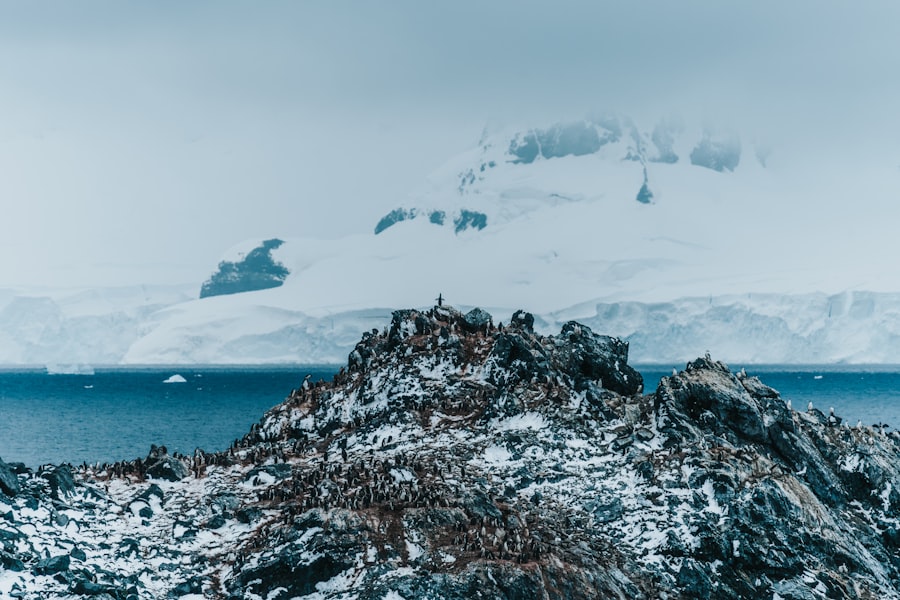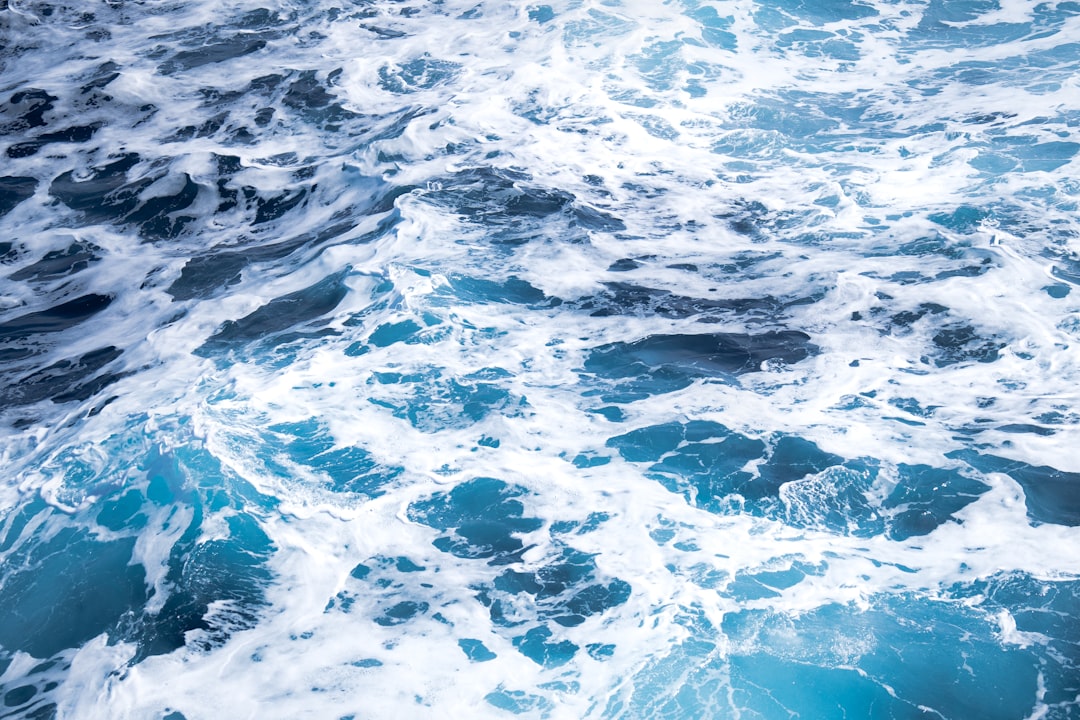The Drake Passage, a body of water situated between the southern tip of South America and Antarctica, is renowned for its tumultuous seas and unpredictable weather. Spanning approximately 800 kilometers (500 miles) in width, it serves as a critical maritime route for vessels traveling to and from the Antarctic region. Named after the English explorer Sir Francis Drake, who navigated these waters in the late 16th century, the passage is often regarded as one of the most challenging stretches of ocean in the world.
Its strategic importance cannot be overstated, as it connects the Atlantic and Pacific Oceans, facilitating not only maritime trade but also scientific exploration. Geographically, the Drake Passage is characterized by its deep waters and strong currents, particularly the Antarctic Circumpolar Current, which flows unimpeded around Antarctica. This current plays a significant role in global ocean circulation and climate regulation.
The passage’s unique location also means that it is subject to extreme weather conditions, making it a focal point for oceanographic studies. Understanding the dynamics of the Drake Passage is essential for anyone considering a journey through these waters, as it sets the stage for both the challenges and wonders that await.
Key Takeaways
- The Drake Passage is a narrow body of water between South America’s Cape Horn and the South Shetland Islands of Antarctica, known for its rough seas and challenging conditions.
- The weather in the Drake Passage is unpredictable and can change rapidly, with strong winds, high waves, and potential for storms.
- The Drake Passage is home to a diverse range of wildlife, including whales, seals, penguins, and various seabird species.
- Navigating the Drake Passage presents challenges such as strong currents, icebergs, and potential for rough seas, requiring experienced and skilled crew.
- Safety precautions for crossing the Drake Passage include securing loose items, wearing appropriate gear, and following instructions from the crew for emergency situations.
Weather and Climate in the Drake Passage
The weather in the Drake Passage is notoriously volatile, with conditions that can change rapidly and without warning. This unpredictability is largely due to the convergence of cold polar air from Antarctica and warmer air masses from the north. As a result, travelers can experience everything from calm seas to violent storms within a matter of hours.
The region is known for its high winds, often exceeding 50 knots, and waves that can reach heights of over 30 feet. Such conditions can pose significant risks to navigation and safety, making it imperative for those crossing the passage to be well-prepared. Seasonal variations also play a crucial role in the climate of the Drake Passage.
During the summer months, from November to March, temperatures are relatively milder, with average highs around 5°C (41°F). This period is considered the best time for expeditions to Antarctica, as wildlife activity peaks and sea conditions are generally more favorable. Conversely, winter months bring harsher weather, with temperatures plummeting and increased ice formation.
Understanding these seasonal patterns is vital for planning a successful journey through this challenging maritime corridor.
Wildlife in the Drake Passage

The Drake Passage is not only a formidable body of water but also a vibrant ecosystem teeming with diverse wildlife. The nutrient-rich waters support an array of marine life, making it a prime location for observing various species of seals, whales, and seabirds. Among the most notable inhabitants are the majestic humpback whales, which migrate through these waters during their feeding season.
Other species such as orcas and blue whales can also be spotted, drawing wildlife enthusiasts and researchers alike to this unique environment. Birdwatchers will find the Drake Passage particularly rewarding, as it serves as a migratory route for numerous seabird species. Albatrosses, petrels, and skuas are commonly seen soaring above the waves, taking advantage of the strong winds to glide effortlessly.
The presence of these birds is not only a testament to the ecological richness of the area but also an indicator of the health of marine ecosystems. Observing wildlife in the Drake Passage offers a glimpse into the intricate relationships that exist within this dynamic environment, highlighting the importance of conservation efforts in preserving these species and their habitats.
Navigational Challenges in the Drake Passage
| Challenge | Description | Impact |
|---|---|---|
| Strong Winds | High-speed winds can make navigation difficult and dangerous. | Increased risk of ship instability and delays. |
| Icebergs | Presence of icebergs poses a threat to navigation. | Risk of collision and damage to vessels. |
| Currents | Strong currents can affect the course and speed of ships. | Difficulty in maintaining desired route and schedule. |
| Weather Variability | Unpredictable weather patterns can impact navigation. | Potential for rough seas and challenging sailing conditions. |
Navigating the Drake Passage presents a myriad of challenges that require skillful seamanship and thorough preparation. The combination of strong currents, unpredictable weather patterns, and shifting icebergs creates a complex navigational landscape that can be daunting even for experienced mariners. The Antarctic Circumpolar Current flows continuously around Antarctica, generating powerful waves that can catch vessels off guard.
Additionally, sudden squalls can arise without warning, further complicating navigation. Icebergs pose another significant hazard in these waters. While many are visible above the surface, submerged portions can extend far below, creating hidden dangers for vessels traversing the passage.
Mariners must remain vigilant and utilize advanced radar technology to detect ice formations and avoid potential collisions. Understanding these navigational challenges is essential for ensuring safe passage through one of the world’s most treacherous maritime routes.
Safety Precautions for Crossing the Drake Passage
Given the inherent risks associated with crossing the Drake Passage, implementing safety precautions is paramount for any expedition. First and foremost, thorough planning is essential. This includes monitoring weather forecasts closely and being prepared to alter course or delay departure if conditions appear unfavorable.
Additionally, vessels should be equipped with state-of-the-art navigation systems and communication devices to ensure constant contact with support teams on land. Safety drills should also be conducted prior to departure to familiarize crew members with emergency protocols. Life jackets, lifeboats, and other safety equipment must be readily accessible and in good working order.
Furthermore, maintaining a well-stocked medical kit on board is crucial for addressing any potential health issues that may arise during the journey. By prioritizing safety measures and fostering a culture of preparedness among crew members, travelers can significantly mitigate risks associated with crossing this formidable passage.
Choosing the Right Vessel for Crossing the Drake Passage

Selecting an appropriate vessel for traversing the Drake Passage is a critical decision that can greatly influence the overall experience of the journey. Given the passage’s notorious conditions, it is advisable to choose a ship specifically designed for polar exploration or one that has been reinforced to withstand icy waters. Ice-strengthened hulls are essential for navigating through potential ice floes and ensuring structural integrity during rough seas.
In addition to structural considerations, vessel size plays an important role in determining comfort levels during transit. Smaller ships may offer greater maneuverability and access to remote areas but can be more susceptible to rough seas compared to larger vessels designed for stability. Travelers should also consider onboard amenities such as dining options, sleeping arrangements, and recreational facilities when selecting a vessel.
Ultimately, choosing the right ship involves balancing safety features with comfort and accessibility to create an enjoyable experience while crossing this challenging maritime expanse.
Tips for Minimizing Seasickness in the Drake Passage
Seasickness is a common concern for travelers embarking on a journey through the Drake Passage due to its notorious rough waters. However, there are several strategies that individuals can employ to minimize discomfort during transit. One effective approach is to choose accommodations located in the middle of the vessel where motion is less pronounced compared to cabins at either end.
Additionally, spending time on deck can help individuals acclimate to motion by allowing them to focus on stable horizons rather than feeling confined indoors. Dietary choices also play a significant role in managing seasickness symptoms. Consuming light meals prior to departure and avoiding heavy or greasy foods can help reduce nausea.
Staying hydrated is equally important; however, individuals should limit caffeine and alcohol intake as these substances can exacerbate symptoms. Over-the-counter medications such as antihistamines or prescription remedies may also provide relief for those prone to motion sickness. By implementing these strategies, travelers can enhance their comfort levels while navigating through one of the world’s most challenging maritime environments.
Historical Significance of the Drake Passage
The historical significance of the Drake Passage extends far beyond its treacherous waters; it has played a pivotal role in maritime exploration and scientific discovery over centuries. Sir Francis Drake’s expedition in 1578 marked one of the first recorded crossings of this passage, paving the way for future explorers seeking new trade routes and territories. His journey not only contributed to European knowledge of South America but also ignited interest in Antarctic exploration.
In subsequent centuries, numerous expeditions have traversed these waters, each contributing valuable insights into geography, oceanography, and climate science. The passage has served as a gateway for researchers studying Antarctic ecosystems and climate change impacts on polar regions. Today, it remains an essential route for scientific vessels conducting research in one of Earth’s last frontiers.
Understanding this historical context enriches travelers’ experiences as they navigate through waters steeped in exploration and discovery.
Recommended Gear and Clothing for Crossing the Drake Passage
When preparing for a journey across the Drake Passage, selecting appropriate gear and clothing is crucial for ensuring comfort and safety throughout the expedition.
Mid-layers such as fleece jackets or insulated vests offer additional warmth without adding bulk.
An outer waterproof shell is essential for protecting against wind and rain while maintaining breathability. Footwear should not be overlooked; sturdy waterproof boots with good traction are necessary for navigating wet decks during inclement weather. Accessories such as gloves, hats, and scarves are also important for protecting extremities from cold temperatures and wind chill factors.
Additionally, packing essentials like sunscreen and sunglasses is vital even in cooler climates due to reflective sunlight off water surfaces. By equipping themselves with suitable gear tailored to changing conditions, travelers can enhance their overall experience while crossing this challenging maritime expanse.
Emergency Protocols for Crossing the Drake Passage
Establishing clear emergency protocols is vital when crossing the Drake Passage due to its unpredictable nature and potential hazards. Crew members should be well-trained in emergency response procedures that encompass various scenarios such as man-overboard situations or medical emergencies onboard.
Communication systems must be reliable; vessels should maintain contact with coast guard services or other support teams throughout their journey. In case of severe weather or mechanical failure, having contingency plans in place allows crews to make informed decisions regarding rerouting or seeking shelter until conditions improve. By prioritizing safety through comprehensive emergency protocols, travelers can navigate these treacherous waters with greater confidence.
Planning Your Journey Through the Drake Passage
Planning a journey through the Drake Passage requires careful consideration of various factors that influence both safety and enjoyment during transit. First and foremost, travelers should research reputable expedition companies known for their expertise in polar navigation and commitment to passenger safety. Reading reviews from previous travelers can provide valuable insights into what to expect during an expedition.
Timing is another critical aspect; choosing to travel during peak seasons ensures better weather conditions while maximizing opportunities for wildlife sightings. Additionally, understanding visa requirements or permits needed for entering certain regions may be necessary depending on individual travel plans. By taking these factors into account when planning their journey through this remarkable passageway between continents, travelers can embark on an unforgettable adventure filled with discovery amidst one of nature’s most awe-inspiring landscapes.
The Drake Passage, a significant body of water located between the southern tip of South America and Antarctica, is named after the English explorer Sir Francis Drake. This passage is renowned for its challenging navigation conditions due to strong currents and unpredictable weather. For those interested in exploring more about the geographical significance and historical context of the Drake Passage, you can find a related article on the MyGeoQuest website. This resource provides insights into the exploration history and the natural phenomena associated with this crucial maritime route.
WATCH NOW! Drake Passage: Earth’s Deadliest Waters Revealed
FAQs
What is the Drake Passage?
The Drake Passage is a body of water located between the southern tip of South America and the northern tip of the Antarctic Peninsula. It connects the southwestern part of the Atlantic Ocean with the southeastern part of the Pacific Ocean.
Why is it called the Drake Passage?
The Drake Passage is named after the English explorer Sir Francis Drake, who is believed to be the first European to have sailed through the area in 1578.
What is the significance of the Drake Passage?
The Drake Passage is known for its rough seas and challenging sailing conditions, making it a strategic and important route for ships traveling between the Atlantic and Pacific Oceans. It also plays a crucial role in the circulation of ocean currents and the exchange of marine life between the Atlantic and Pacific Oceans.
What is the weather like in the Drake Passage?
The Drake Passage is notorious for its unpredictable and often harsh weather conditions, including strong winds, high waves, and frequent storms. These conditions can make sailing through the passage challenging and potentially dangerous.
Are there any notable landmarks or features in the Drake Passage?
The Drake Passage is primarily known for its open water and challenging sailing conditions, and there are no major landmarks or features within the passage itself. However, it is surrounded by the stunning natural landscapes of the southern tip of South America and the northern tip of the Antarctic Peninsula.
